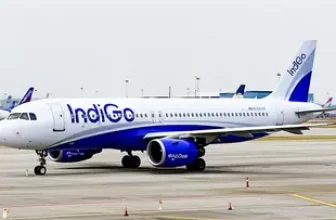
In a significant move towards normalcy, India has reopened all 32 airports that had been shuttered since May 9 due to escalating India-Pakistan tensions. This decision comes in the wake of a NOTAM (Notice to Airmen) issued by the Indian government, marking the first night of peace after nearly five days of conflicts that had disturbed air traffic and travel plans across the region.
The reopening of the airports is being seen as a positive indication of de-escalation along the Line of Control (LoC) and the International Border. Airlines, including IndiGo, have begun resuming flight operations, albeit gradually, to ensure safety and stability in air travel. Chandigarh International Airport was among the first to announce that flights would commence from 10 am on May 12, followed by airports in Srinagar, Amritsar, Leh, Jodhpur, and several others across northern and western India.
This move comes after a wave of military actions where India launched Operation Sindoor in response to an attack on April 22 in Pahalgam, attributed to Pakistani-backed terrorists. The operation conducted by the Indian military targeted nine terrorist infrastructures, leading to a marked rise in tensions. In contrast, Pakistan’s recent plea for ending hostilities reflects the impact of these military strikes, highlighting a shifting dynamic as both nations seek an exit from the situation.
While the reopening of airports brings a sigh of relief to travelers and airlines alike, it also raises questions about the future of India-Pakistan relations. The fundamentals of peace in the region lie not just in the cessation of hostilities but also in the establishment of ongoing dialogue and cooperation.
Reports indicate that the night of May 8-9 has been relatively peaceful across Jammu and Kashmir, with no incidents of cross-border firing. The Indian Army confirmed this peace, stating, “The night remained largely peaceful across Jammu and Kashmir and other areas along the International Border.” This is a welcome relief for residents and travelers who have lived under the shadow of conflict.
The aviation landscape, which faced significant disruptions due to the airport closures, is gradually finding its footing again. The abrupt shutdown had routed many flights away from key northern and western corridors, causing inconvenience for thousands of passengers. With the gradual resumption of flights, airports like Ludhiana, Bhuntar, and Shimla, alongside the major hubs, are expected to contribute significantly to restoring normalcy.
However, travelers are advised to remain vigilant, as airlines have noted that delays could occur as operations stabilize. IndiGo, for instance, has issued a travel advisory indicating that while they aim to resume all services as soon as possible, fluctuations in schedules are likely. The airline also extended waivers for changes and cancellations until May 22, 2025, offering travelers the flexibility they might need in these uncertain times.
The reopening of airports amid easing military tensions represents a pivotal moment for both nations. This move could serve as a catalyst for future dialogue, fostering a more stable and peaceful atmosphere conducive to trade and travel. With the echoes of conflict still fresh, the ability of India and Pakistan to navigate towards a more peaceful coexistence remains the focal point of both international observers and regional stakeholders.
As the situation continues to evolve, it is imperative for both nations to work not only on military matters but also on building bridges of communication and understanding. The reopening of these airports, therefore, stands as more than just an operational decision; it reflects a collective hope for a more positive narrative in the historically turbulent relations between India and Pakistan.






